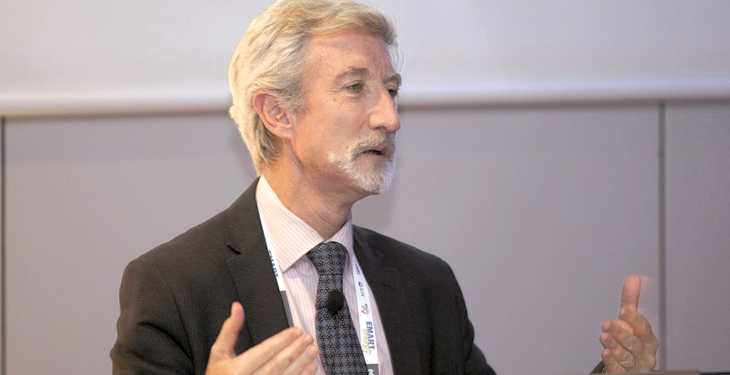Regulations governing the EU wholesale electricity market have become so complex that the integration of the market is regressing instead of progressing, says Peter Styles, Chairman of the Electricity Committee of the European Federation of Energy Traders (EFET), in an interview with Energy Post. He notes TSOs (transmission system operators) on average now make less cross-border electricity transmission capacity available on the EU high voltage grid than in the late 1990s – before there had been any legislation forcing integration of national energy markets.
Fortunately, the Clean Energy Package – the Commission’s proposed ambitious suite of revised legislation – can move the market back in the right direction, says Styles. If it is adopted with the right amendments.
“The high point of a good EU approach to creating an integrated, open market in power was in 2003, with the adoption of the so-called 2nd IEM (Internal Energy Market) Legislative Package. All the pieces were put in place then to allow objective, transparent, non-discriminatory grid access on a cross-border as well as national basis, and to ensure that markets would remain open through regulatory oversight. But after that, especially with the advent of the Third Energy Package, which came into force after 2009, things went downhill. The market architecture and governance became overly complex. The EU legislation explicitly excluded renewable electricity generation output from the disciplines of the IEM. The EU emissions trading system (ETS) began to fail as a mechanism for pricing carbon emissions. Governments introduced new national measures in the name of security of supply, unchecked by EU oversight,” according to Energypost.eu.
This sobering assessment comes from someone who is intimately familiar with the process of EU energy sector liberalisation and market integration.
A soft-spoken Englishman, Peter Styles was, in the late 1990s, the EU representative of then-thriving Enron – the American company that became one of the largest energy trading houses in the world. After Enron collapsed into bankruptcy in late 2001, Styles was persuaded by fellow members of the Board of EFET, the association of European energy traders that he had helped found in 1999, to remain on the Board and become their retained electricity market specialist.
Efficiently functioning markets in energy commodities, carbon emission allowances and renewable attributes will enable the most efficient production, storage and distribution of renewable energy across Europe in the future, Styles believes.
Indeed, EU energy policy is fully aligned with this goal – in theory at least. In practice, says Styles, things don’t look so good. Initially, in the early 2000s great strides were made in opening up and connecting markets, especially after the 2nd Electricity and Gas Directives were adopted in 2003. “For the first time, EU electricity market regulation was directly applicable in each member state, to govern cross-border grid access, thereby facilitating exports and imports of power”, says Styles. In those heady days, some new entrants and large industrial consumers were even dreaming of turning Europe into a “single copper plate”. At least there was real hope of replacing national boundaries to energy markets with enlarged bidding zones.
But with the Third Energy Package, the EU took a wrong turn, according to Styles. One mistake, he says, was the conversion of ETSO, a voluntary association, into ENTSO-E, a compulsory grouping of European electricity TSOs (transmission system operators). Or rather, “the mistake was to give this organisation a quasi-statutory role. The European Commission entrusted the electricity TSOs jointly with the task to develop EU network codes setting out rules for the functioning of the market, or what we call market facing codes. In electricity, unlike in the gas sector, these draft codes were not a success at all.”
The Commission was forced to acknowledge this, says Styles, and stopped short of adopting network codes directly applicable in the entire EU. Instead, the draft texts elaborated by ENTSO-E, but challenged by market participants and by ACER (the Agency for the Cooperation of Energy Regulators), were turned into binding Commission guidelines, to be implemented in effect in each member state. But as such, they are still meant to set market rules, notes Styles. “And they are terribly complex.”
